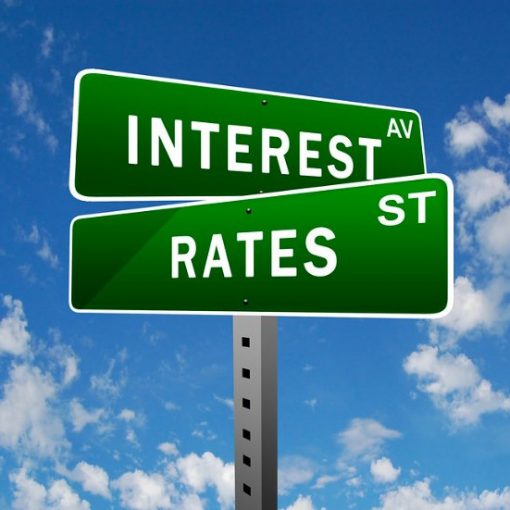Jeremy Schwartz, CFA, Director of Research, WisdomTree Asset Management
In the latest “Behind the Markets” podcast, we revisited a discussion on farmland investing that we had a few months back.
Since that episode aired, the two public farm real estate investment trusts (REITs) have faced market pressure, caused by both specific concerns over the individual REIT operating models and anxiety over macro conditions and global trade-war concerns.
With all that in mind, and taking advantage of Brandon Zick of Ceres Partners being back on the Wharton campus, where we record our podcasts, we spoke with Zick about his current thoughts on farmland based on his experience as a private investor in this area.

Zick’s Background
Zick was the first hire at Ceres Partners in 2010, after he met Perry Vieth, its founder and CIO. Vieth started the fund to move some of his assets out of “fiat paper” money and into “hard assets” that could grow with inflation over time.
Zick has been running the day-to-day portfolio and doing farm analysis. When he started at the firm, it managed 6,000 acres, and today it manages 113,000 acres of land and $725 million of investor capital.
Zick has some estimates that farmland is not very institutionalized; only 2% of the farmland is owned in traditional institutional channels, and it trades at a rate of only 1% per year, with more land turnover every year. He thus thinks this creates a more inefficient market with good valuation characteristics but makes it difficult to source the land.
Golden Payoff
Zick described the payoff to farmland as “gold with a coupon” that delivers strong inflation-hedged returns.
The coupon is the rent stream—for a broad “non-investable” index, it shows income of around 3.5% per year, and Zick’s firm is targeting returns that are a bit higher.
These returns are dictated by the productivity of farms, so he thinks there are ties to inflation in this income stream.
There is also a beta to the farmland itself—one can receive the coupon of rental payments from leasing the land plus the growth in land investments, which historically has been 6% per year from some of the indexes over time.
Prime Time
Zick described the present as being a prime time to invest in farmland because it has been at the bottom of its cycle for the last three to four years in commodity markets—with tariff concerns exacerbating the issue.
He sees a dearth of supply in many of the markets, and there’s the general principle that high prices cure high prices through higher supply, and low prices cure low prices. He sees demand as robust and supply constrained.
Are Tariffs an Issue?
Zick commented that a large part of the U.S. agriculture market is driven by exports, so any disruption to global trade is not good for the U.S. Zick raised an interesting point regarding when the tariffs were announced in mid-May.
Many U.S. farmers didn’t have crops in the ground, and many already would have hedged out their production—so they aren’t fully feeling the hurt from the recent drop in prices.
In Zick’s opinion, this will probably become a bigger problem if the prices are still this low in February. But overall, Zick thinks most of the bad news is priced into the agricultural commodity markets and that many of the agricultural commodities might be good contrarian investments at the moment.
Buy Signal
Zick targets a 5% “rental” return to all the land he buys, and if he wanted to make capital expenditures he’s looking for 10% cash on hand.
Zick thinks that when investing in farmland, people are looking for income returns with low volatility of underlying asset returns that are providing inflation protection.
Given the low-volatility nature of this asset class, Zick thinks that the vehicles to get exposure should have lower volatility.
Takeaway
The public equity markets have ebbs and flows with daily liquidity and more correlation with the public markets.
Zick described the REIT structure as a currency to fund land growth—and when you have strong markets, this is helpful, but during painful declines in the market, it is more difficult, especially if the management team believes the public market is selling at a discount to intrinsic value.
This was an interesting conversation on an asset class that can play a unique role for portfolios intended for inflation protection. To hear the whole conversation, please listen below.
Photo Credit: Eric Vo via Flickr Creative Commons
Versions of this article first appeared on SeekingAlpha and the WisdomTree blog on September 25, 2018:
Disclosure: Certain of the information contained in this article is based upon forward-looking statements, information and opinions, including descriptions of anticipated market changes and expectations of future activity. WisdomTree believes that such statements, information, and opinions are based upon reasonable estimates and assumptions. However, forward-looking statements, information and opinions are inherently uncertain and actual events or results may differ materially from those reflected in the forward-looking statements. Therefore, undue reliance should not be placed on such forward-looking statements, information and opinions.
About the Author: Jeremy Schwartz, CFA, Director of Research, WisdomTree Asset Management is responsible for the WisdomTree equity index construction process and oversees research across the WisdomTree family. Prior to joining WisdomTree, Jeremy was Professor Jeremy Siegel’s head research assistant and helped with the research and writing of Stocks for the Long Run and The Future for Investors. He is also co-author of the Financial Analysts Journal paper “What Happened to the Original Stocks in the S&P 500?” Jeremy is a graduate of The Wharton School of the University of Pennsylvania and currently stays involved with Wharton by hosting the Wharton Business Radio program “Behind the Markets” on SiriusXM 111.



